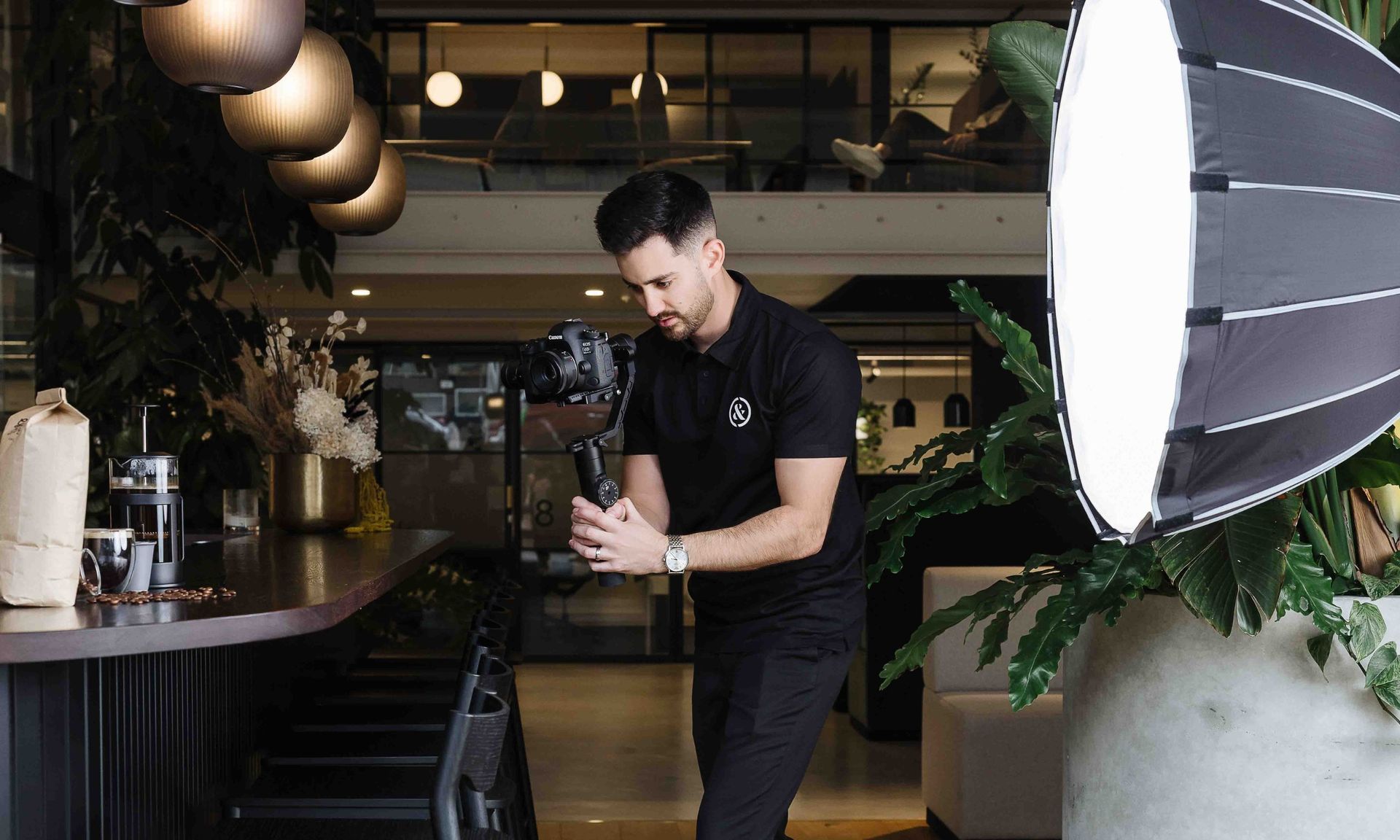The most common video marketing mistakes SMBs make (and how to avoid them)
The most common video marketing mistakes SMBs make
(and how to avoid them)
Video marketing can be a powerful way for small and medium-sized businesses to stand out, but only when it’s done well. From brand story videos to product demos, the right video can build trust, attract leads, and drive conversions. Too often though, SMBs fall into the trap of rushing content without a clear plan or message. The result? Wasted time, underwhelming results, and missed opportunities. If your videos aren’t performing the way you hoped, you’re not alone. This article explores the most common video marketing mistakes SMBs make and what you can do to ensure your next video hits the mark.
ARTICLE CONTENTS
What this article will cover
Before diving in, here’s a quick look at what we’ll cover. Each section unpacks a common challenge SMBs face with video marketing along with practical ways to avoid it and get more from your content.
No strategy behind the content
Why starting without clear goals or audience targeting leads to poor results.
Poor planning and scripting
How lack of preparation leads to weak messaging and wasted effort.
Trying to DIY everything
When DIY hurts more than it helps - and when quality matters.
Focusing on features, not storytelling
Why storytelling connects better than just listing features.
Not optimising for platform or purpose
How the wrong format or length can limit performance.
Not tracking performance or ROI
Why measuring success matters and what to track.
Treating video as a one-off project
Why consistency matters more than one-off content.
2
Poor planning and scripting
Video might look effortless when it’s polished and professional, but that result comes from planning. When businesses rush into filming without structure, they often end up with confusing messaging, missed points, or content that runs far too long. Planning isn’t about overcomplicating things, it’s about making sure your message lands clearly and with impact.
A strong video starts with a simple brief: What’s the goal? Who’s speaking? What are the key takeaways? From there, scripting or at least outlining the main points helps maintain flow and avoid rambling. It also ensures the tone matches your brand and speaks to your audience in the right way.
Without a clear plan, videos can feel unpolished even if the visuals are high quality. And when messaging isn’t clear, viewers are less likely to stick around, let alone take action. A little structure upfront saves time during filming, makes editing easier, and leads to stronger results.
Lacking strategy behind content
1
One of the biggest reasons video marketing falls flat is a lack of strategy. Many businesses dive into production because they’ve heard video is effective, but without a clear purpose, the content often misses the mark. It’s not enough to simply have a video. You need to know who it’s for, what it’s meant to achieve, and where it fits in your wider marketing funnel.
A common mistake is skipping the basics: Who’s the audience? What stage of the customer journey are they in? What action should they take after watching? Without these answers, your video risks becoming digital noise - watched by the wrong people or, worse, not watched at all. Clear targeting and message alignment are essential to choosing the right type of video and marketing channel (Business.govt.nz, 2022).
Whether it’s brand awareness, lead generation, or conversion support, every video should be tied to a specific goal. When your content is backed by intent and fits into your broader marketing plan, it’s far more likely to perform and easier to measure.
3
Trying to DIY everything
There’s a time and place for quick, informal videos - social media stories, behind-the-scenes clips, or spontaneous updates. But when it comes to your website, ads, or brand storytelling, DIY video can quickly fall short. Shaky footage, poor lighting, and tinny audio don’t just look unprofessional, they send the wrong message about your business.
Many SMBs take the do-it-yourself route thinking it’ll save time or money, but it often ends up costing more in the long run. Video production can be time-consuming, especially when you're trying to learn on the fly or fix mistakes during editing. What starts as a simple task can snowball into hours of frustration and a final product that doesn’t reflect the quality of your brand.
Outsourcing to professionals ensures your message is captured clearly and creatively. It frees up your team to focus on running the business while giving your content the polish and performance it needs to deliver results.
Focusing on features, not storytelling
It’s easy to fall into the habit of listing what your product or service does. Features feel like the most logical way to communicate value, but on their own, they rarely spark interest or build trust. What actually connects with people is the story behind the offering - the problem it solves, the transformation it creates, or the experience it delivers.
When videos focus solely on features, they can end up sounding like a sales pitch. Viewers tune out because there’s nothing human to hold their attention. A well-told story, on the other hand, builds emotional connection and helps your audience see themselves in the narrative. It might be a customer success journey, a founder’s motivation, or a glimpse behind the scenes.
Storytelling doesn’t mean adding drama, it means showing relevance. Help your viewers understand why what you do matters, and you’ll create videos that are not just informative but memorable.
4
Not optimising for platform or purpose
A well-made video can still miss the mark if it’s not tailored to where and how it’s being used. Each platform has its own best practices, and ignoring them can drastically reduce engagement. A three-minute horizontal video might work well on your website, but it’s unlikely to perform on Instagram Stories or TikTok.
Another common mistake is treating all content the same. A video created for an awareness campaign shouldn’t look or feel like one designed to close a sale. Skipping this layer of strategic thinking often leads to videos being posted once, then forgotten, with no plan for repurposing or distribution.
Optimising video means considering where it will appear, how your audience will engage with it, and what you want them to do next. With a few smart tweaks, the same piece of content can work harder across multiple channels.
5
Not tracking performance or ROI
One of the most avoidable mistakes in video marketing is skipping the measurement phase. Without clear goals or metrics, there’s no way to tell whether a video is working, or what to improve next time. Too often, businesses post a video and hope for the best, but views alone don’t tell the full story.
You need to understand what success looks like before hitting a record. Are you aiming for brand awareness, engagement, leads, or conversions? Each objective comes with different indicators. For example, high watch time might signal good storytelling, while a strong click-through rate shows your call-to-action is landing well.
Once a video is live, use the available analytics tools. You can do this on platforms like YouTube, Meta, or even your website to track how it’s performing. These insights help shape your next video, refine your messaging, and justify the investment. Data removes the guesswork and helps you turn creative content into measurable outcomes (GoBusiness, 2023).
6
Treating video as a one-off project
Creating a single video and hoping it will carry your brand isn’t a strategy, it’s a missed opportunity. Video works best as part of a long-term, consistent approach. When businesses treat it as a one-off effort, they lose the chance to build momentum, reinforce their message, and stay top-of-mind with their audience.
One video might generate interest, but it’s unlikely to cover every stage of the customer journey. You need different types of content to meet people where they are - whether that’s a brand introduction, a product demo, a customer testimonial, or a call-to-action at the point of purchase.
A strategic video marketing plan includes a variety of content that works together to build trust over time. With regular publishing and a mix of formats, you create familiarity and credibility. It’s not about producing more for the sake of it. It’s about showing up with purpose, again and again.
7
Conclusion
Video marketing is one of the most effective ways to reach and connect with your audience, but only if it’s approached with intention. Common mistakes like skipping strategy, rushing production, or treating video as a one-off can hold your business back from getting real results. The result is content that falls flat, drains resources, and doesn’t support your wider marketing goals. The good news is, these pitfalls are avoidable.
With a few key shifts, starting with better planning, storytelling, and platform-specific optimisation, you can create videos that actually work for your business. When each video is created with purpose, backed by planning, and aligned with your broader marketing goals, it becomes more than just content, it becomes a tool for growth. Whether you’re looking to increase visibility, build trust, or drive conversions, a strong video strategy can help you get there. And you don’t have to do it alone.
Ready to create video content that delivers?
If your business is investing time and energy into video but not seeing the results you hoped for, it might be time for a more strategic approach. At Clarke & Clarke, we help SMBs plan, produce, and promote videos that are built to perform.
From brand storytelling to social ads, we work with you to create video content that aligns with your goals and connects with the right audience.
Get in touch with us today to see how we can bring your video marketing to life.

Frequently asked questions
Got questions about video marketing? You’re not alone. Here are some of the most common things SMBs ask when it comes to getting better results from their video content.
What’s the most common mistake SMBs make with video marketing?
It’s usually not just one mistake, but a combination of common missteps, including:
- Starting without a clear strategy
- Skipping planning or scripting
- Trying to do everything in-house
- Focusing on features instead of storytelling
- Not tailoring content for the platform or purpose
- Failing to track performance or ROI
- Treating video as a one-off project instead of a long-term strategy
Each of these can limit how effective your video content is, but addressing them leads to much stronger results.
Do I need to hire a professional to create effective videos?
Not always. Social media content can often be created in-house, but for brand videos, ads, or anything public-facing on your website, professional production helps you look credible and polished.
How can I tell if my video is performing well?
Track metrics like engagement, watch time, and click-through rates. These indicators help you understand what’s working and where to refine your strategy.
How often should my business be creating video content?
Consistency is more important than frequency. A steady stream of purposeful videos across different stages of the customer journey is more effective than occasional one-offs.
What types of videos should I start with?
Start with content that supports your biggest marketing goals. This could be a brand story, a product demo, or a testimonial. Focus on what will build trust and answer your audience’s key questions.
Can I reuse one video across multiple platforms?
Yes, but you may need to adjust the format, length, or captions to suit different platforms. A little editing goes a long way in making your content perform well everywhere.
















